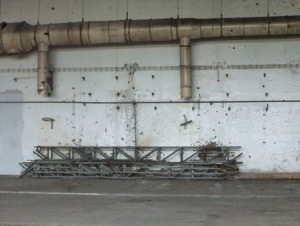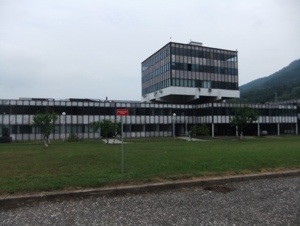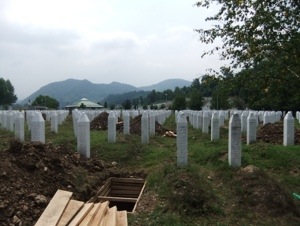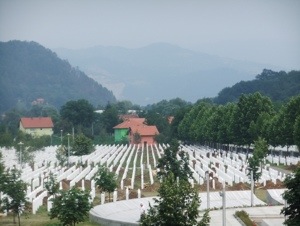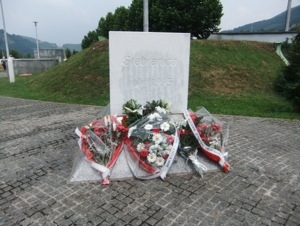Today we traveled to the Srebrenica memorial and cemetery to learn more about the genocidal massacre that occurred there in July 1995. The memorial site is in an old battery warehouse where the Dutch UN soldiers were stationed. It is also where approximately 5,000 Bosniaks sought refuge from the advancing Bosnian Serb army led by Ratko Mladic. Essentially, within only a few days in 1995 over 8,000 people were killed. So far, just over 5,600 have been buried at the memorial cemetery across the street – 409 more will be buried there on July 11. July 11, by the way, marks the date that Srebrenica fell to the Bosnian Serb army.
Another thing I found interesting to consider is the failure of the UN. It’s been brought up a couple of times over the past few days but really sunk in today at the memorial. Srebrenica was the first UN declared “safe area” yet they failed to stop the worst genocide in Europe since World War II. The UN soldiers refused to engage in warfare against the Bosnian Serb army and forced the Bosniaks seeking refuge there to leave. It’s inconceivable to me why they would do that – I know that they’re peacekeepers, not soldiers, and they aren’t supposed to engage in warfare unless fired at first (which I don’t believe happened), but there really needs to be exceptions to that law.
The visit was very emotional for many of us; it is surreal being in a place where so many people urged the UN soldiers for help and were turned away; where thousands of Bosnian Muslims were massacred by Bosnian Serbs who had basically been their neighbors. I also really enjoyed the ride there and back – it gives a great overview of Bosnia and you can see the mountainous landscape as well as ruins of houses and buildings that (I’m assuming) were damaged during the war. It was unbelievable to see so many deserted/abandoned homes, and even more shocking to see people living in homes that looked as though they should be abandoned. There were several instances where I was looking at a house wondering what happened to the people who used to live there and then looking into the windowless opening and seeing signs of someone living there now: cloths hanging on a line, things resembling mattress-like areas, etc.
The entire day – rides included – really put things into perspective. So many people, especially Americans, don’t realize how good they have it. Sure, the US has its issues and there’s poverty, economic uncertainty, and unemployment; but it’s just so different here. It literally looks as though some of these people have close to nothing. It makes you wonder how they survive: how do they get food, go to the bathroom, do laundry? Americans have very little idea what it is like to live through and survive an extremely violent war and to try and rebuild your life. It fascinates me to think about the daily lives of Bosnians and to try and imagine living through what many of them have.
